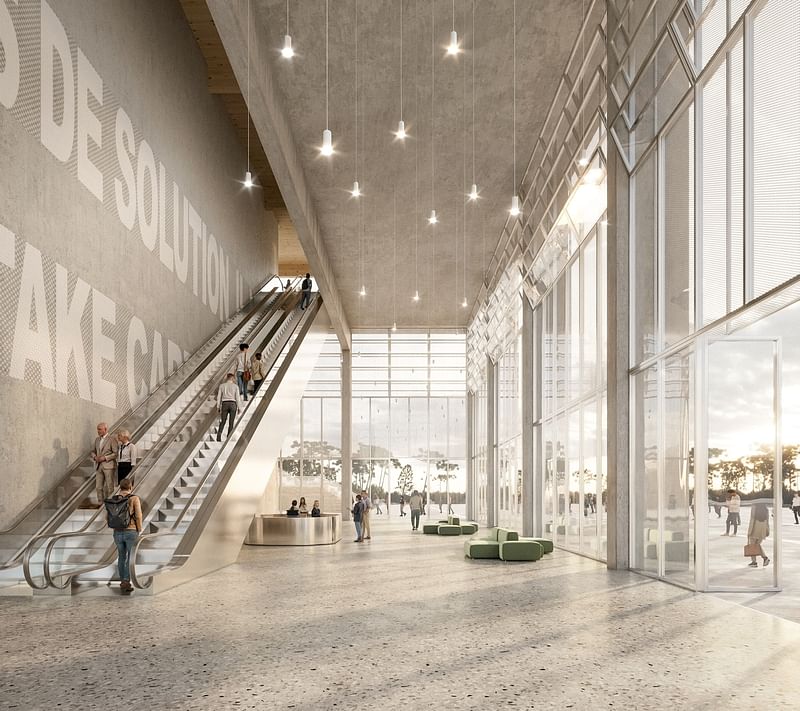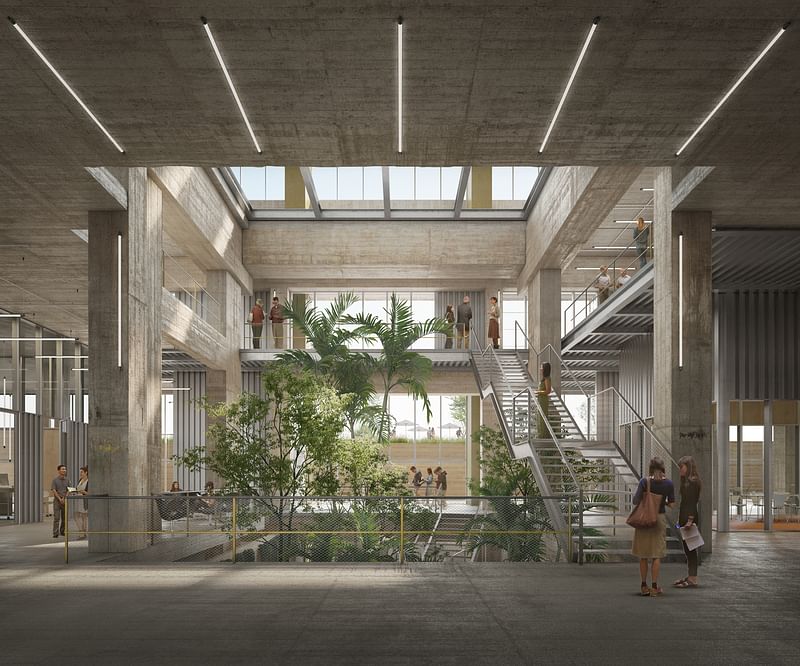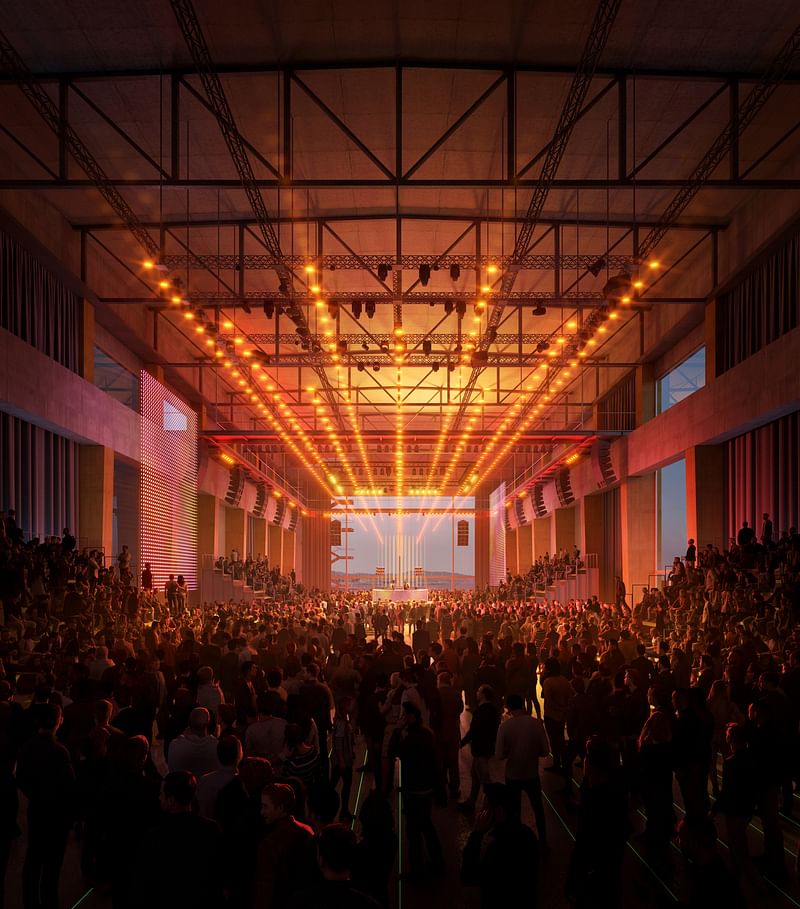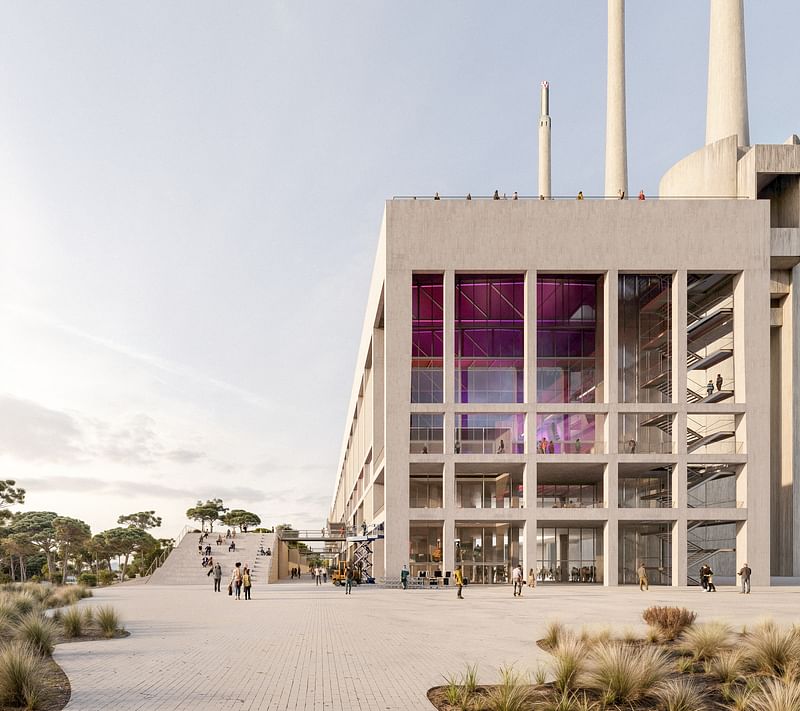Marvel/GdSB proposal for Three Chimneys industrial site remake rises above all others
By Josh Niland|
Monday, Mar 31, 2025

Related
Marvel Architects and Garcés de Seta Bonet Arquitectes (GdSB) have won a competition in Spain to deliver a new media district at a former power plant called 'Tres Xemeneies' ("Three Chimneys") near the heart of Poble-sec in Barcelona.
The new development is to be named Catalunya Media City. Marvel and GdSB chose to title their presentation 'E la nave va' (or "As the ship goes on") in reference to Federico Fellini’s 1983 drama. It will begin work later this year with an expected 2027/29 completion on the construction timeline.
Esteban de Backer, a partner in the Barcelona office, says it has the potential to "become an interurban and metropolitan benchmark."

It aims to do so via a drastic expansion and transformation of the site into an educational hub and resource, celebrating open spaces as sites of leisure and civic cohesion in the shadow of the preserved icon of Catalan industrialism.
The interior turbine hall will be connected to the remaining site through transversal cuts into its structural envelope, creating direct access points and clear sightlines aligned to meet the Barcelona-Badalona axis that defines the 22-acre Besòs industrial area.

The planned program at this site includes four different features and services designed to promote innovation, creativity, technology, training, and digital culture exhibitions. A 5,400-square-foot auditorium features into the mix with another 4,300-square-foot immersive room, same same-sized studio, and two smaller ones totaling half its dimensions plus a 2,700-square-foot laboratory, recording studios, library, and litany of other multipurpose rooms, UX labs, and fabrication spaces.

"All spaces share the same key elements: appropriate proportions, generous heights (approximately 58 feet), strong load-bearing floors, upper-level access points, and the ability to suspend equipment from the ceiling," explains GdSB‘s co-founding partner, Anna Bonet. "These elements create a spectacular hall with epic proportions. The main objective of the intervention is to enhance a highly flexible space capable of hosting any event, from intimate performances to large-scale installations with a capacity of up to 4,500 people."

The project includes over 48,000 square feet worth of solar panels. Jonathan Marvel said finally: "Transforming an infrastructure that has had a heavy environmental impact in the past into one that drives the future of media collaboration while utilizing the existing structure’s weight to lighten the new program’s energy footprint, seems to us, like a worthy goal for the future of architecture."

Some 26 proposals were submitted overall to the competition.
Marvel is currently working on their ambitious Bronx Museum of the Arts expansion and seeking to hire a Construction Administration Architect in New York City.

RELATED NEWS ZGF, MIRAG, and Double Twist win competition for ‘bright and bold’ mass timber research center in Barcelona


Share
1 Comment
Gary Garvin · Apr 01, 25 7:24 PM
+++++
An improvement over the original building. The three chimneys are marvelously expressive, and I think close to the old ones, if not the same. They live on in collective memory, taking on new meanings.
Comment as :